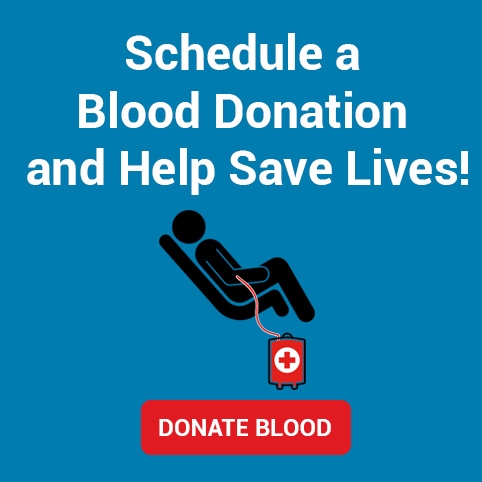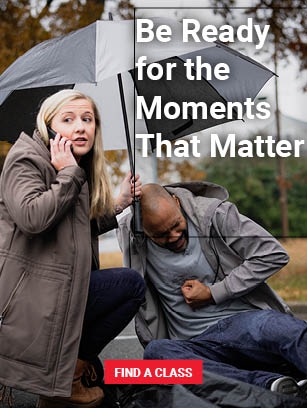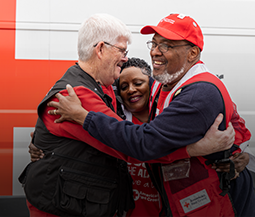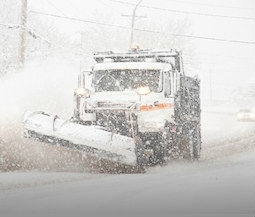As some communities begin to reopen during the global coronavirus (COVID-19) pandemic, public health officials say the best way to prevent illness is to avoid being exposed to this virus.
Below are some steps from the Centers for Disease Control and Prevention to help protect yourself and others. Stay informed about what’s happening in your community, and always follow the directions of state and local authorities.
HOW TO PROTECT YOURSELF AND OTHERS
- Wash your hands often with soap and water for at least 20 seconds, especially after being in a public place, or after blowing your nose, coughing or sneezing.
- If soap and water are not readily available, use a hand sanitizer with at least 60% alcohol.
- Avoid touching your eyes, nose and mouth with unwashed hands.
- Avoid close contact with people who are sick. Some people without symptoms may be able to spread the virus.
- Stay home as much as possible and avoid non-essential travel.
- Practice social distancing by keeping at least 6 feet — about two arm lengths — away from others if you must go out in public.
- Stay connected with loved ones through video and phone calls, texts and social media.
- Cover your mouth and nose with a cloth face cover when around others and when you must go out in public, such as to a grocery store. The cloth face cover is meant to protect other people in case you are infected.
- However, do NOT place cloth face coverings on young children under age 2, anyone who has trouble breathing, or is unconscious, incapacitated or otherwise unable to remove the mask without assistance.
- In addition, do NOT use a facemask meant for a health care worker.
- Continue to keep about 6 feet between yourself and others. The cloth face cover is not a substitute for social distancing.
- See CDC guidelines, including how to create your own cloth face cover.
- Cover your coughs and sneezes. Use a tissue to cover your nose and mouth, and throw used tissues in a lined trash can. If a tissue isn’t available, cough or sneeze into your elbow — not your hands. Wash your hands immediately.
- Clean and disinfect frequently touched surfaces daily. This includes tables, doorknobs, light switches, countertops, handles, desks, phones, keyboards, toilets, faucets and sinks. Follow CDC guidance.
WHO IS AT A HIGHER RISK?
According to the CDC, early information shows that older adults, people who live in a nursing home or long-term care facility, and individuals of any age with the conditions below are at higher risk of getting very sick from COVID-19:
- Have serious underlying medical conditions, particularly if not well controlled, such as heart, lung or liver disease; diabetes; moderate to severe asthma; severe obesity; and chronic kidney disease undergoing dialysis.
- Have a weakened immune system, including those undergoing cancer treatment, smoking and having other immunocompromised conditions.
If you are at higher risk for serious illness from COVID-19, it is critical for you to:
- Stay home if possible and follow the other steps above. Avoid all cruise travel and non-essential air travel.
- Call your health care provider if you have concerns or to ask about obtaining extra necessary medications in case you need to stay home for a prolonged period of time.
- Call a medical professional as soon as COVID-19 symptoms start, if you are at higher risk.
- See CDC guidance for more information for those at higher risk.
IF YOU ARE SICK
COVID-19 symptoms include fever, coughing and shortness of breath, plus additional ones listed on the CDC website. Keep track of your symptoms, which may appear two to 14 days after exposure, and call to seek medical attention if your symptoms worsen, such as difficulty breathing.
If you think you may have been exposed to COVID-19, contact your health care provider immediately.
Mild Illness
Most people have mild illness and are able to recover at home. If you think you are sick:
- Stay home and call your doctor for medical advice and before visiting a medical office. Older adults and people of any age with serious underlying medical conditions should call a health care provider as soon as symptoms start.
- Separate yourself from other people in your home.
- Avoid sharing personal household items, such as dishes, drinking glasses, cups, eating utensils, towels or bedding. Wash items thoroughly after using them with soap and hot water.
- On your own, clean and disinfect high-touch surfaces daily in your sick room and designated bathroom. Have a healthy household member do the same for surfaces in other parts of the home. If you are sharing a bathroom, clean and disinfect it after each use.
- Wear a cloth face cover if you are around other people (e.g., sharing a room or vehicle) and before you enter a health care provider’s office. See CDC guidelines.
Emergency Warning Signs
If your symptoms become severe, call to get medical attention immediately. Warning signs include:
- Trouble breathing
- Persistent pain or pressure in the chest
- New confusion
- Inability to wake or stay awake
- Bluish lips or face
This list is not all inclusive. Consult your medical provider for any other symptoms that are severe or concerning. Call 911 if you have a medical emergency and note if you have, or think you might have, COVID-19.
Review CDC guidance for more information if you are sick, including what to do if you live in close quarters, shared housing or have pets.
New Psychological First Aid: Supporting Yourself and Others during COVID-19 Course
In order to help people build resilience and lend support to others during these difficult times, Red Cross Training Services has developed a new Psychological First Aid: Supporting Yourself and Others during COVID-19 course. The content is based on guidance from the American Red Cross Scientific Advisory Council, the Center for Disease Control and Prevention (CDC), and the American Academy of Pediatrics (AAP). The online course takes approximately one hour to complete and includes content on recognizing stress as well as caring for yourself while supporting your family and coworkers.
FINDING UP-TO-DATE INFORMATION
Visit redcross.org/coronavirus for more information on COVID-19 safety. For the latest information, please visit the CDC website at cdc.gov/covid19. If you live outside the United States, health and safety tips can be found through the World Health Organization and by following your local Red Cross or Red Crescent society’s social media channels (directory).












